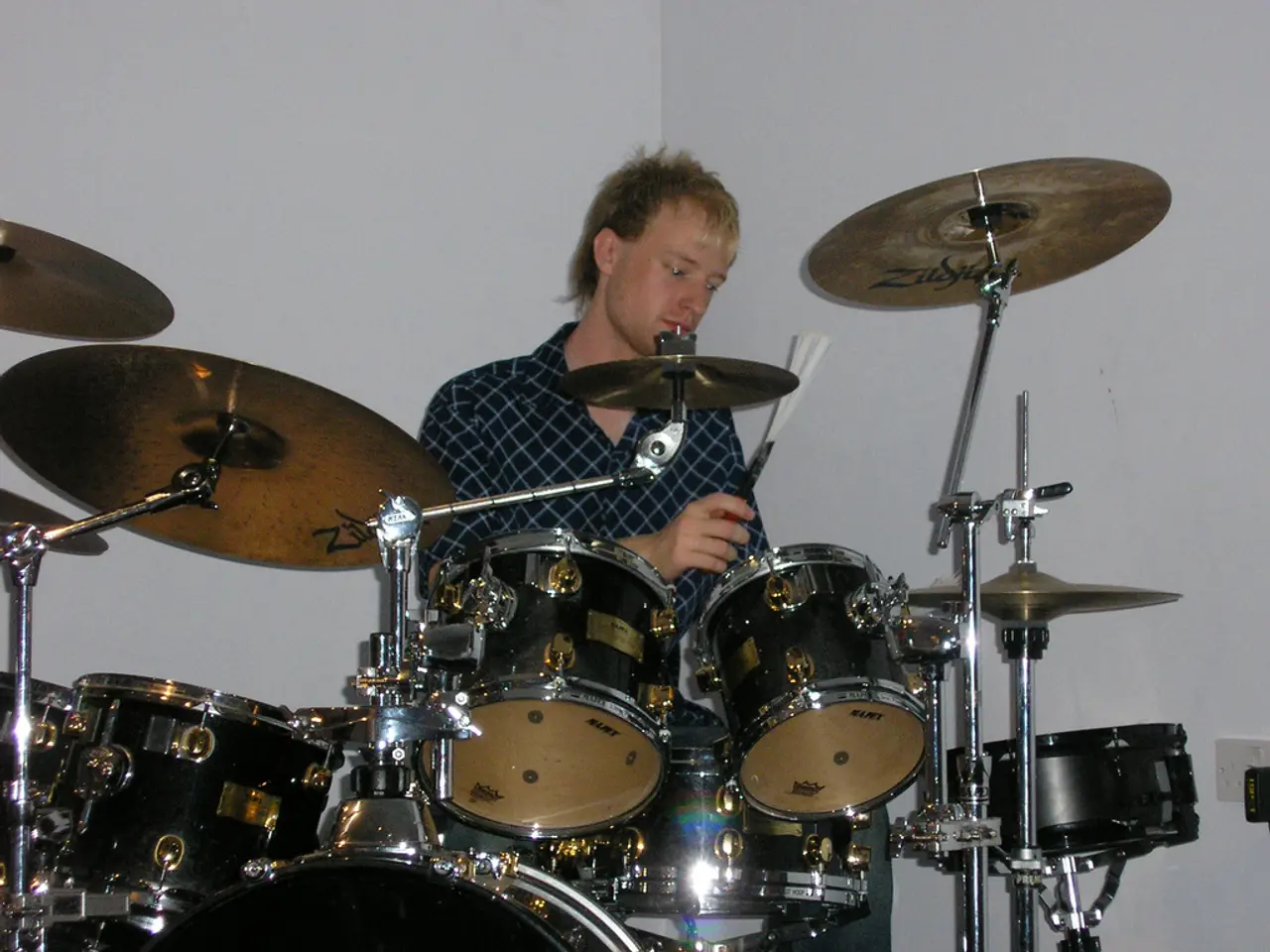Enhance Your Drum Sound Immediately with These Snare Reverb Tricks
In the realm of modern music production, the use of reverb on snare drums plays a pivotal role in shaping the character and dynamics of a track. By carefully adjusting parameters such as decay time, pre-delay, and integrating EQ and filters, producers can create a lush and dynamic snare sound that sits well in the mix.
One of the key elements in this process is the decay time. Choosing a moderate to longer decay time, typically between 1.5 to 6 seconds, allows the snare's reverberation to bloom and fill the space, creating a lush sound. For dramatic impact, longer reverb tails (4.5 to 6.2 seconds) can be used, particularly when automated on specific hits to emphasize moments like pre-drop snare hits.
Pre-delay, another crucial parameter, sets a space between the dry snare sound and the reverb tail. By setting a pre-delay between roughly 20 ms to 80 ms, the attack's clarity is preserved while the reverb adds space and dimension behind it. Syncing pre-delay to the track's tempo can help maintain rhythmic cohesion.
Combining reverb with effects like EQ and filters can further enhance the snare's presence in the mix. Rolling off low-end frequencies below 80–100 Hz on the reverb return helps avoid muddiness in the mix, while using post-reverb EQ to reduce energy in the 200-500 Hz range can prevent clouding of the sound. Automated filter sweeps on the reverb tail, such as high-pass or low-pass filters, can add movement and prevent static reverb from becoming dull or overwhelming.
Gated reverb, which involves applying a noise gate to the reverb tail, can create a tight, punchy effect by cutting the tail off abruptly. This technique is common with decay times around 1.5–2 seconds and gate hold times of 250–400 ms.
Other tips for creating a lush and dynamic snare sound include automating the reverb send or parameters dynamically on key snare hits, using creative effects on the reverb return, and blending top and bottom snare mics differently to optimize the dry snare capture.
Parallel processing, sidechain reverb effects, and using a reverb send for overheads and room mics are additional techniques that can help unite different drum elements, create a more natural acoustic environment, and balance the presence of the snare with the rest of the mix.
The choice of reverb type depends on the desired sound and style of the music. For example, chamber reverb provides a versatile middle ground, mimicking the acoustics of echo chambers, while spring reverb has a distinctive, "boingy" sound, perfect for retro or surf rock vibes. In electronic music, longer reverb can create lush, immersive soundscapes, while room reverb emulates the ambiance of small to medium-sized spaces, adding subtle warmth and a natural vibe.
In conclusion, the art of adding reverb to a snare drum involves starting with a clear, punchy dry snare, setting pre-delay to separate the hit from the reverb tail, choosing a decay time appropriate to the song's pace and style, and cleaning up the reverb with EQ and gating. Automating send levels and filter parameters for dynamic variation, and using creative processing on the reverb return, can sculpt a lush, dynamic snare space that sits well in the mix.
- To achieve a lush, dynamic sound for the snare drum in music production, producers often employ technology like reverb, EQ, and filters in a well-equipped studio.
- By setting a moderate to longer decay time and pre-delay, music enthusiasts can adjust the reverb on their snare drums, creating a productive blend of clarity and space in their recordings.
- In the realm of music entertainment, gated reverb is utilized to create tight, punchy effects for certain music genres and styles by cutting off the reverb tail abruptly.
- To reduce muddiness and clouding in the mix, it's essential to employ EQ and gating techniques in tandem with reverb during the mixing stages of music production.
- As the choices in reverb types expand, choosing the perfect reverb for a specific music genre or production can enhance the overall character of the finished recording in the world of modern entertainment.





